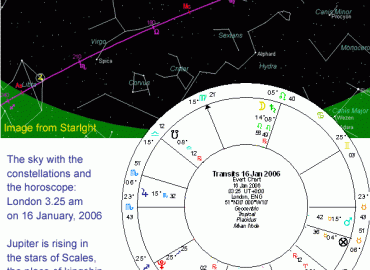By Dr Nicholas Campion
The current revolts in the Arab world appear to many to be unpredictable. However, the Persian astrologers of 2000 years ago developed a system for measuring political upheavals according to the cycles of Jupiter and Saturn, a point which is of interest as the two planets are currently in an opposition: horoscopically Jupiter is in Aries opposed to Saturn in Libra.
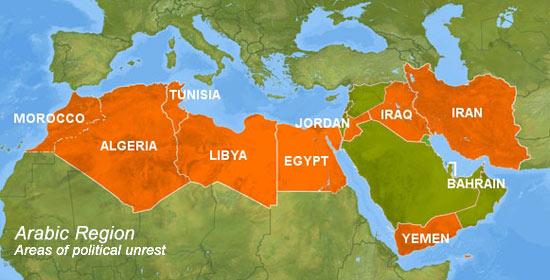
This system observed the coincidence of timing between the apocalyptic teachings of Zoroastrian religion and the combined cycle of Jupiter and Saturn which were considered at that time to be the two slowest-moving planets.[1]
According to the Zoroastrians, world history was driven forward by a process characterised by twelve phases of one thousand years each. As one millennium came to an end and another began, a crucial phase was initiated in the bitter struggle for supremacy between Ahura Mazda, or Ormazd, the god of light, and Ahriman, his dark counterpart.
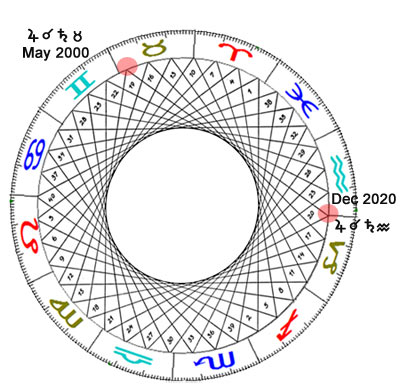
At some point, perhaps after the Persian occupation of Babylon in 539 BCE and more likely following the spread of Hellenistic astrology after the second century BCE, it was noticed that the conjunctions between the two slow-moving planets, Jupiter and Saturn, which take place every twenty years, progress through the signs of the zodiac in an orderly sequence of 240 years per element which repeats itself after 960 years.[2]
Our earliest surviving account of the Persian astrological theories of world history was written down by the Persian Jew, Masha’allah (740 – 815). The theory of Jupiter-Saturn cycles and historical epochs was set out in his On Conjunctions, Religions and Peoples, and he related the astronomical pattern to socio-political and religious shifts which occurred every 240 years, and the periodic conflagrations or catastrophes, such as Noah’s flood, which were thought to take place every 960 years.[3]
[NOTE: In truth this cycle lasts around 800 years. The Jupiter-Saturn conjunctions occur every 20 years and they stay in the same element – Air, Earth, Water or Fire – for around 160 to 200 years. The cycle of earth signs began in 1802 in Virgo and completed with the last conjunction in Taurus in May 2000. The next conjunction will occur in Aquarius (air) in December 2020. Thus the entire cycle through all the elements lasts for around 40 conjunctions and takes around 800 years.]
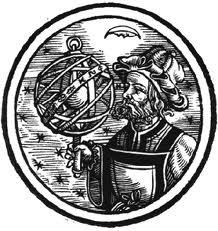
‘We say’, he insisted, ‘that when the conjunction of the two superior planets necessitate something in the changes of religions and dynasties, the changes of the Sharias and the Sunnas, the occurrence of important matters, the change of the kingdom, the death of kings and the kinds of occurrence of prophets, revelation, and miracles in religions and dynasties’.[4]
The fundamental premise was that the nature of any Jupiter-Saturn conjunction, on which was based its use as a forecasting mechanism, was indicated by the horoscope cast for the preceding spring equinox, the date every year when the Sun entered Aries.
The logic was that, at this moment, a new cycle of time began, within which all possibilities for that cycle were contained. Masha’allah included the horoscopes for the spring equinoxes preceding the Jupiter-Saturn conjunctions prior to the great deluge (it was believed that the rains which caused the flood began at midnight precisely on 18 February 3101 BCE with a conjunction of planets in Pisces, appropriately the last of the water signs) and the births of both Christ and Mohammed.
Political changes are permitted a quarter way through the cycle, around every 240 years, while great prophets appear when the cycle was complete, thus every 960 years a new prophet appeared. Of course nothing could be so exact and Mohammed and Christ were separated by only 600 years. All the same the structure of planetary cycles acted as an ideal, fixed framework within which God could act. Yet the tension between two competing cosmologies is obvious: could God, or the gods, act spontaneously, as theology decreed, or were they bound by mathematical order? The solution worked out by devout Jews, Christians and Moslems was that the order itself was created by God and was subject to him. For Masha’allah, therefore, God might be free to send prophets whenever he wishes but those wishes just happen to coincide with the multiples of the 20-year Saturn-Jupiter cycle.
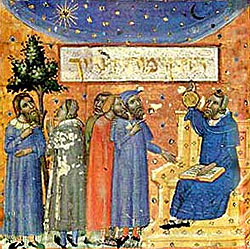
This ‘conjunctional’ astrology proved remarkably persistent. It was repeated by Al-Biruni (c.973-1050), the most distinguished astrologer of the tenth and eleventh centuries, and by the fourteenth century Tunisian statesman and scholar, Ibn Khaldun (1332-1406) who, in other respects, was a bitter opponent of astrology.[5] As set out by Ibn Khaldun, the total period of conjunctions, 960 years, indicated a change of dynasty, the medium period, 240 years, pointed to ‘the appearance of persons in search of superiority and royal authority’, and the short period, twenty years, exactly as Abu Ma’shar had written, pointed to ‘rebels or propagandists, and the ruin of towns of their civilisations’.[6]
Anticipating the future was vital for political management although, for historians, identifying the ebb and flow of historical patterns with astronomical patterns seemed to take precedence over prediction, almost as if their purpose was to offer proof of God’s plan in the correlation of the patterns of the past with the heavens.[7] Even then prediction could not be avoided for, if God’s plan had unfolded like clockwork to the present, so it must do in the future.
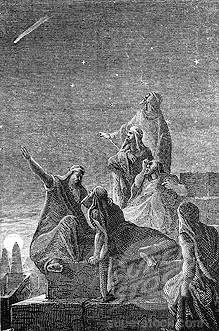
Amazing detail could be marshalled in support of this proposition. One manuscript contained ninety-three horoscopes as evidence, running from about 2200 BCE to 1000 CE. Abu Ma’shar offered only seventeen horoscopes but over a larger time span, from 3381 BCE to 928 CE, while a later text which focused on the career of the Mongol warlord Genghiz Khan (1167-1227) took as its scope the entire period from the 7th to 17th centuries.[8]
Every planetary combination could bring its own set of warnings. Abu Ma’shar was at times quite specific: when Aries is rising at the Aries ingress, which would occur in years when the Sun itself enters Aries at around dawn, we can expect tyranny, war, high pressure in the spring and intense cold in winter. In a possible echo of Assyrian texts we are told that the Babylonian king may go on a journey and defeat his enemies while Armenia might suffer drought and starvation and the king of India may die.[9]
The actual structure of Abu Ma’shar’s astrology is precisely mathematical, derived from the Pythagorean strand within Platonism. Everything in the historical process can be reduced to numerical formulae: when Jupiter is moving towards Saturn but still has 120 degrees to travel, prophecies will appear; when it has 90 degrees to go, religious and political leaders’ affairs will alter; and when there are 60 degrees left, conditions will be similar to those that prevailed when the 120 degree situation took place. The whole situation is mathematically regulated: social, political and religious developments unfold with unerring regularity. For Abu Ma’shar, the nature of the planets was crucial, so Saturn, for example, was destructive and Jupiter benevolent. [10]

However, the system was reformed in the seventeenth century by the great astronomer Johannes Kepler (1571-1630) who was more concerned with the long-term patterns the planets made than their essential natures.[11] Unfolding celestial patterns, he believed, correlated with unfolding political ones.
For Kepler, adapting Persian theory, the current middle eastern upheavals would be indicated by the next Jupiter-Saturn opposition, the midpoint of the cycle, which takes place on 28 March 2011. Kepler would take two other factors into account. Firstly he would look at why this opposition has had such powerful political correlates.
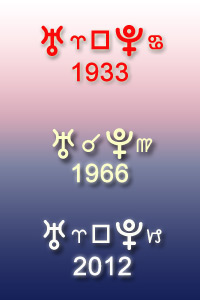
Secondly, we have to hypothesise that, in view of his modern instincts, Kepler would have included planets which were not known in his life time, of which two, Uranus and Pluto, are approaching a ninety-degree square aspect, their first since 1933, and their first difficult aspect since the conjunction of the mid-1960s.
Again, to adapt Kepler’s method, he would have argued that the Jupiter-Saturn aspect has anticipated the Uranus-Pluto one, and his rationale for this would have been a square between Jupiter and Pluto in mid-February.
Such work is part prophecy, part proto-sociology and offers us, from within the traditional of the Islamic world itself, an ancient cosmological framework for understanding the current Arab revolts.
—–
Dr Nicholas Campion is a senior lecturer in Archaeology and Anthropology and director of the Sophia Centre, and runs the distance learning MA programme in Cultural Astronomy and Astrology at University of Wales Trinity Saint David, UK.
—–
[1] See David Pingree, From Astral Omens to Astrology From Babylon to Bikaner, (Rome: Istituto Italiano Per L’Africa E L’Oriente, 1997), p. 49; Robert Hand (ed.) and Robert Schmidt (trans.), The Astrological Records of the Early Sages in Greek, (Berkeley Springs: Golden Hind Press, 1995), p. xiv.
[2] See Abu Ma’shar, On Historical Astrology: The Book of Religions and Dynasties (On the Great Conjunctions), ed. and trans. Keiji Yamamoto and Charles Burnett, 2 Vols., (Leiden: Brill, 2000), I.16, pp. 11-13.
[3] This work has not survived intact, but part of it is included in a work written in the early/mid-tenth century by an Arabic Christian astrologer known as Ibn Hibintā (translated in E.S. Kennedy and David Pingree, The Astrological History of Masha’Allah, (Cambridge, Mass.: Harvard University Press, 1971)
[4] Abu Ma’shar, On Historical Astrology: The Book of Religions and Dynasties (On the Great Conjunctions), 3.5. For an examination of Abu Ma’shar’s historical cycles see David Pingree, The Thousands of Abu Ma’shar, (London: Warburg Institute, 1968).
[5] Al-Biruni, The Book of Instruction in the Elements of the Art of Astrology, trans. R. Ramsay Wright, (London: Luzac and co., 1934), chap. 250, p. 151. Also see Mohammed Hakim and Ansar Zahid Zhan, Al-Biruni: His Times, Life and Works, (Delhi: Renaissance Publishing House, 1990).
[6] Ibn-Khaldun, The Muqaddimah: An Introduction to History, trans. Franz Rosenthal, (London: Routledge and Kegan Paul, 1987), 3.52, pp. 260-1.
[7] See the discussion in Rosenthal, Franz, A History of Muslim Historiography, (Brill: Leiden, 1968), pp. 110-113.
[8] Edward S. Kennedy,‘An Astrological History Based on the Career of Genghis Khan’, in S. Seikaly, R. Baalbaki and P. Dodd (eds.), Quest for Understanding: Arabic and Islamic Studies in Memory of Malcolm Kerr, (Beirut: American University of Beirut, 1991), pp. 223-231, reproduced in Edward S. Kennedy, Astronomy and Astrology in the Medieval Islamic World, (Aldershot: Ashgate, 1998).
[9] Abu Ma’shar, On Historical Astrology, 4.1.4.
[10] Abu Ma’shar, The Abbreviation.
[11] See for example, ‘Kepler, Johannes, Astrological Prognostications for 1618’, trans John Meeks, Culture and Cosmos, Vol. 12, no 1 and 2, Spring/Summer and Autumn Winter 2009, forthcoming.



